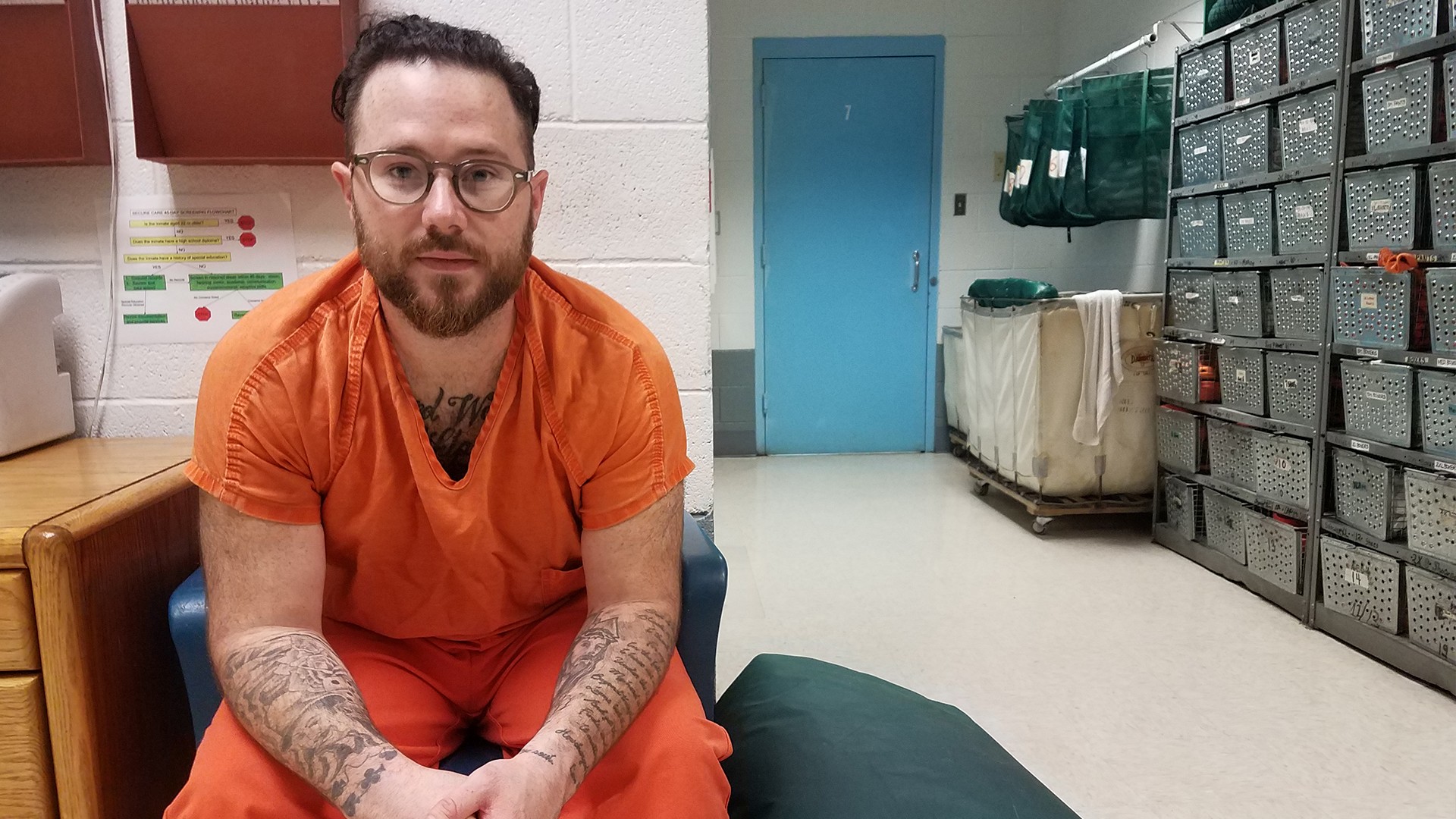As soon as I walked in the room, I burst out crying.The place was shockingly white—neon white. And so small. There was no clock, and no books besides a Bible. The window was too high to see out of. And it was freezing.Before my first stay in solitary confinement, I didn't think "the hole" sounded all that bad. I like spending time alone—I thought I'd just read quietly and maybe even enjoy the break from human interaction. But I quickly found out that solitary confinement felt a lot less like spending time alone and a lot more like being buried alive in a bright, white hell.When I walked out of isolation less than a week later, it felt like I'd been there at least a month. With every step I took away from the cell, I was flooded with relief. I thought the mental agony was over. In some ways, though, it was just beginning.I landed behind bars in 2010. After nine years battling a drug addiction that began in the depths of depression, I was arrested during my senior year of college with a large amount of heroin. I'd been shooting up daily and selling to support my habit—and generally doing all sorts of things I would come to regret.During my 21 months in the system, I only ended up in solitary confinement twice, and just for a few days each time. The first time was non-punitive: There just wasn't enough space in my "home" jail, so I got shipped off to another one, where I was put in routine isolation for a few days before being cleared to mingle with the general population. The second time was punitive, the result of what seemed to me like a combination of a dubious accusation and paperwork error.Both times, I had no idea how long I'd be there. I remember wondering: Will I actually get out? Will they forget about me in here? Meanwhile, I cried. I talked to myself. I banged my head against the wall.Once, I poured milk on my head just to check that I could still feel things, that I was still alive.Then I contemplated whether I still wanted to be alive—and whether I could figure out a way to kill myself. Was the corner of that desk sharp enough if I fell on it at the right angle? Could I shove a noose through the vent?The second stay I handled a little better than the first. But they were both some of the worst days of my life. And after all the highly questionable to downright awful things I did during nine years of addiction, that's really saying something.When I finally got out of solitary—after what seemed like an eternity—I quickly realized it wasn't really over.At first, I was just shaky and nervous, afraid of offending the jail gods and landing back in the hole. Eventually, whenever there were new inmates and a chance of getting boarded out and put in solitary, I would pack up all my stuff, ready to go, and then rock back-and-forth, waiting anxiously. I developed rituals to ward off fear of isolation. And eventually, I went to the jail mental health staff about the possibility of anti-anxiety medication.But at that point, I was still locked up. I assumed that as I moved to the exits of the criminal justice system, things would be better. Instead, I starting having dreams about solitary confinement. Sometimes, I woke up screaming.Eventually, the nightmares faded, even if the anxiety lingered. It follows me still, though—all day, every day. And sometimes I feel like I left part of me in that cell, the part of me that remembered how to worry and obsess just a little bit less.Mine is not an entirely abnormal reaction, according to Terry Kupers, the Wright Institute professor and psychiatrist who penned the upcoming book Solitary: The Inside Story of Supermax Isolation and How We Can Abolish It. After exposure to solitary, high anxiety is "one of the most common symptoms," he told me. But the other effects vary from one person to the next."It's a little like PTSD," Kupers said. "A lot of people go to war and have traumatic experiences, but only some develop the symptoms of PTSD."I would say maybe a quarter of the people have full-blown isolation panic," he continued, referencing a term coined by his colleague, Hans Toch, to describe immediate, intense reactions to solitary.According to Kupers, other symptoms include anxiety, disordered thinking, difficulty with memory, concentration problems, sleep issues, and anger.On the other hand, some folks in the criminal justice system still don't seem that bothered by solitary confinement.
Check out James Burns's solitary confinement project.
Regina Hufnagel, a former federal corrections officer who now works with the drug-policy-reform group Law Enforcement Action Partnership, only remembers seeing one inmate in nine years who really "freaked out" in solitary confinement."One day he said to me that his pink frilly dust ruffle was doing something," she recalled. Of course, his cell bed didn't have a dust ruffle—and if there was one, it certainly wouldn't have been frilly or pink.But part of why Hufnagel does not seem to have witnessed a slew of negative effects from solitary confinement may stem from the fact that the facility she worked at "didn't use it that often," she conceded."I think there is an overall recognition that putting someone in the hole has detrimental effects," Hufnagel told me, stressing that she still feels it could have value as a disciplinary tool when used appropriately.Right now, in the United States, at least 65,000 people are in solitary confinement on any given day. But the details of what that means can vary considerably from one facility to the next. VICE recently wrapped up a solitary confinement project where James Burns, a filmmaker who spent time in and out of the criminal justice system as a young man, voluntarily entered into a month of isolation at La Paz County Jail in Arizona. VICE rigged up cameras inside the cell to document it all.But as harrowing as Burns's ordeal might have seemed to an onlooker, solitary confinement can be even worse. Sometimes, the cells are even more barren. Sometimes, there are no books or paper on hand. Sometimes, solitary lasts for years, rather than days or weeks.That's not to say Burns somehow had it easy. If he's anything like me, no number of jailhouse privileges or amenities would make that kind of isolation a walk in the park.And even if they did, it's just the start. There's still life on the outside to deal with.Follow Keri Blakinger on Twitter.
This article was originally published on 1/26/17.
Read James Burns' article on why he chose to go into solitary confinement HERE.
Advertisement
Advertisement
Advertisement
Check out James Burns's solitary confinement project.

Regina Hufnagel, a former federal corrections officer who now works with the drug-policy-reform group Law Enforcement Action Partnership, only remembers seeing one inmate in nine years who really "freaked out" in solitary confinement."One day he said to me that his pink frilly dust ruffle was doing something," she recalled. Of course, his cell bed didn't have a dust ruffle—and if there was one, it certainly wouldn't have been frilly or pink.But part of why Hufnagel does not seem to have witnessed a slew of negative effects from solitary confinement may stem from the fact that the facility she worked at "didn't use it that often," she conceded."I think there is an overall recognition that putting someone in the hole has detrimental effects," Hufnagel told me, stressing that she still feels it could have value as a disciplinary tool when used appropriately.
Advertisement
